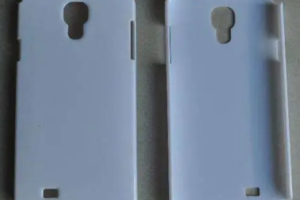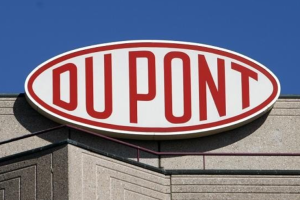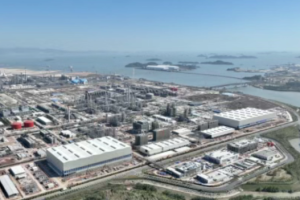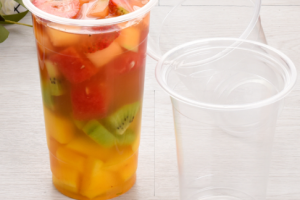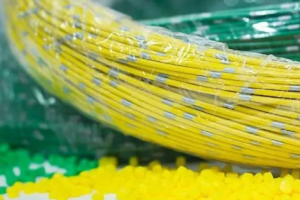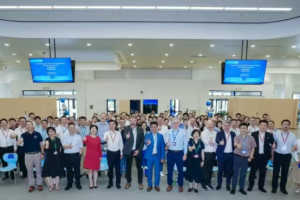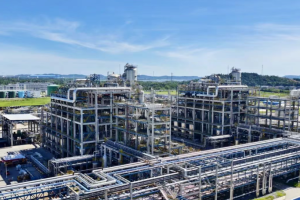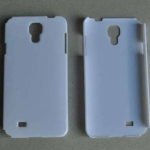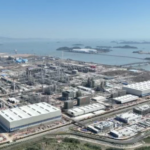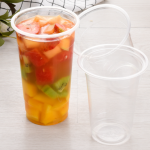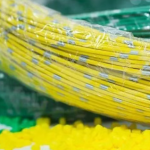May 26, 2025 – Plastic Packaging: The “Invisible Force” of Modern Life and Its Journey Toward Green Transformation
In contemporary society, plastic packaging materials and containers have seamlessly integrated into every aspect of daily life. From the food on supermarket shelves to the medications in home medicine cabinets, and from daily necessities to electronic gadgets, plastic packaging has emerged as a cornerstone supporting modern commercial circulation, thanks to its lightweight nature, versatility, and cost-effectiveness. However, behind the widespread use of this “invisible force” lies both the vigor of industrial innovation and the pressing call for environmental responsibility.

Technological Traits Form the Industry’s Foundation
The core competitiveness of plastic packaging stems from its material properties. On one hand, its high malleability allows it to be processed into diverse forms such as films, containers, and trays through techniques like injection molding, blow molding, and thermoforming, precisely meeting the packaging needs of various products. On the other hand, its chemical stability grants it excellent moisture, oxidation, and corrosion resistance. For instance, in the food sector, high-barrier plastic packaging can extend the shelf life of meat and dairy products severalfold, reducing logistical losses. Moreover, the lightweight nature of plastics significantly cuts down on transportation energy consumption. According to industry statistics, plastic packaging can reduce weight by over 60% compared to glass packaging, a advantage particularly pronounced in the era of rapid e-commerce logistics growth.
Material Innovation Drives Market Segmentation
The diversity of plastic packaging originates from the continuous evolution of base materials. Polyethylene (PE), with its flexibility, has become the主流 material for cling film and garbage bags; Polypropylene (PP), owing to its heat resistance, dominates in microwave-safe meal containers and medical infusion devices; Polystyrene (PS), with its high transparency and good moldability, is often used in disposable tableware and electronic product cushioning packaging. Notably, technological breakthroughs have opened new avenues for specialty plastics: PET (polyethylene terephthalate), with its high transparency and recyclability, has become the material of choice for beverage bottles; while the industrial application of bio-based plastics like PLA (polylactic acid) offers an alternative for eco-friendly packaging.
Container Design Reshapes Consumer Experience
In the realm of packaging containers, plastic innovation has transcended basic functionality, evolving toward intelligence and emotional appeal. The beverage industry has achieved lightweight PET bottle designs, reducing single-bottle weight to under 10 grams, while incorporating laser anti-counterfeiting technology on bottle labels for both environmental and safety considerations. The cosmetics sector, on the other hand, maximizes the aesthetic value of plastic containers through techniques like two-color injection molding and frosting processes to enhance texture, and even develops eco-friendly packaging with replaceable inner cores to extend container lifespan. These designs not only elevate product value but also serve as a medium for brand-consumer communication.
Green Transformation Forces Industrial Upgrade
Behind the prosperity of plastic packaging lies an environmental cost that cannot be ignored. Over 300 million tons of plastic waste are generated globally each year, with packaging waste accounting for nearly half. Facing this challenge, the industry is accelerating the exploration of sustainable paths: on one hand, developing photodegradable and biodegradable plastics by adding degradable additives and optimizing molecular structures; on the other hand, establishing closed-loop recycling systems, such as Germany’s “Yellow Bag Recycling” model, which achieves a 97% PET recycling rate, and China’s “Two-Network Integration” policy, which boosts the coverage of community recycling stations. Additionally, design innovations like thinning technology and single-materialization are reducing recycling difficulties at the source.
Material Innovation Drives Market Segmentation
The diversity of plastic packaging stems from the continuous iteration of base materials. Polyethylene (PE) dominates as a flexible material for cling film and garbage bags; polypropylene (PP), with its heat-resistant properties, leads in microwave meal boxes and medical infusion containers; polystyrene (PS), due to its high transparency and good moldability, is commonly used in disposable tableware and electronic product cushion packaging. Notably, with technological breakthroughs, specialty plastics are forging new paths: PET, with its high transparency and recyclability, becomes the preferred material for beverage bottles; while the industrial application of bioplastics like PLA provides alternative solutions for eco-friendly packaging.
Container Design Redefines Consumer Experience
In the field of packaging containers, plastic innovation has evolved beyond basic functions, embracing intelligence and emotional appeal. The beverage industry has achieved lightweight PET bottle designs, reducing weight to under 10 grams per bottle while incorporating laser anti-counterfeiting technology on bottle labels for both environmental and safety considerations. The cosmetics sector, on the other hand, maximizes the aesthetic value of plastic containers through techniques like two-color injection molding and frosting processes, even developing replaceable inner-core eco-friendly packaging to extend container lifespan. These designs not only enhance product value but also serve as a bridge between brands and consumers.
Green Transformation Drives Industrial Upgrades
Behind the prosperity of plastic packaging lies an environmental cost that cannot be ignored. With over 300 million tons of plastic waste generated globally each year, nearly half of which is packaging waste, the industry is accelerating its exploration of sustainable paths. On the one hand, it is developing photodegradable and biodegradable plastics by adding degradable additives and optimizing molecular structures. On the other hand, it is constructing closed-loop recycling systems, such as Germany’s “Yellow Bag Recycling” model, which has achieved a 97% PET recycling rate, and China’s “Two-Network Integration” policy, which promotes community recycling station coverage. Additionally, design innovations such as thinning technologies and single-material designs are also reducing recycling difficulties at the source.
Future Outlook: Balancing Efficiency and Responsibility
The sustainable development of plastic packaging requires finding a balance between technological innovation and policy guidance. Currently, the industry is exploring full-chain optimization of “materials-design-recycling”: developing water-based coatings to replace traditional inks and reduce recycling difficulties; promoting smart packaging technologies to achieve supply chain visualization through RFID chips; and even exploring “rent-instead-of-sale” models to reduce the use of disposable packaging. These explorations suggest that the future of plastic packaging is not only about material innovation but also about business model reconstruction.
From being a “behind-the-scenes hero” of convenience to a “focal point” of environmental issues, plastic packaging is undergoing a revaluation of value. Only by breaking through technological bottlenecks with innovation and reconstructing industrial logic with responsibility can a win-win path be forged between efficiency and sustainability.

